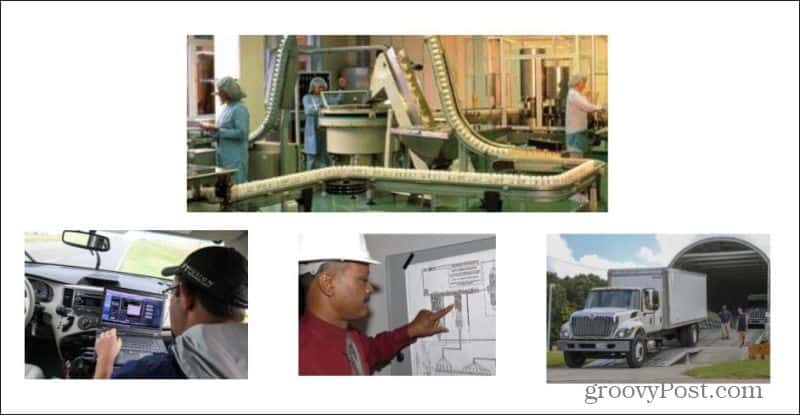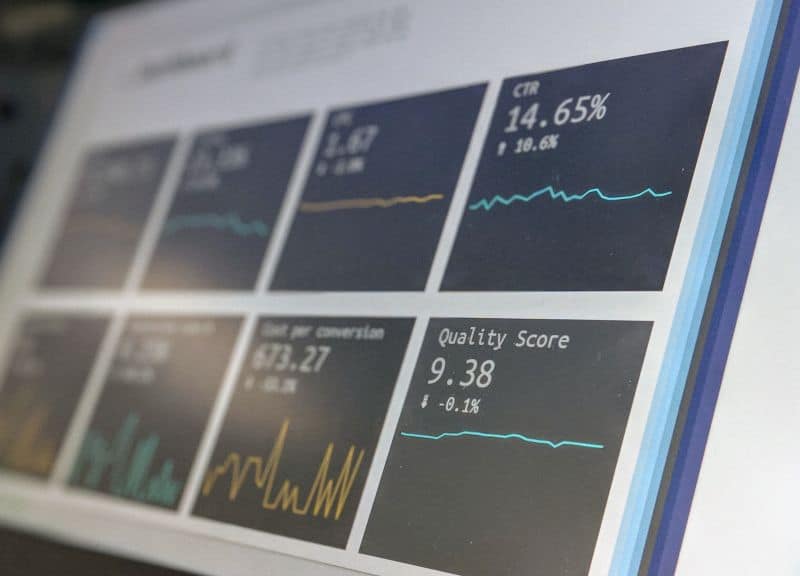But what is digital transformation, and can it truly transform your organization or business? The answer, in short, is yes. If it’s done right. In this article, you’ll learn the basic principles behind digital transformation, including identifying opportunities, creating a “value story” to justify the effort, and implementing correctly.
What Is Digital Transformation?
Digital transformation is exactly what it sounds like. It’s taking a process of any kind and transforming it into a more automated process by using digital tools that are available today. To understand this properly, it’s best to look at an example. Let’s say you run a manufacturing company. Your typical order-to-shipment process might look like this:
Your sales team sends orders to your planning team from the road.The planners submit orders to the manufacturing teams to produce a certain quantity of products to fill the order.Engineers race to fix machine failures so the order isn’t late.In the nick of time, the shipping team loads the truck and ships the order out to the customer.
This is a very simplified version of what happens in the real world. For example, it doesn’t take into account the existing inventory of raw materials or finished products. It ignores things like schedule maintenance of equipment or backorders. But examine all of the moving parts in that process and consider where things might be done manually, and in effect slow down the operation.
Planners receive orders via phone call and type those into a form. They submit the form in PDF format, via email, to the operations manager.The operations manager opens a custom-made Excel spreadsheet she uses to track what machines are already currently making products. She then assigns equipment and people that are available to manufacture the new product. This process takes about two hours.The operators receive instructions at their morning meeting from the operations manager. They return to their equipment, manually enter in the quantity and product to make, and start the manufacturing process.When the machine breaks, it destroys about 200 units of the product before stopping. The engineer comes in (usually in the middle of the night), and takes about 6 hours to troubleshoot and fix the problem.Once the product order is filled, the operator calls the shipping team to retrieve the product and load it into the truck.
At first glance, how many parts of this process do you see opportunities to streamline?
How Digital Transformation Boosts Efficiency
The easiest way to identify digital transformation opportunities is to ask yourself three important questions. The answer to each of these questions is almost always yes. So let’s take a closer look at how digital tools could help our fictional manufacturing company.
Transform the Planning Process
There are countless cloud-based mobile apps available today that a sales team could use to submit orders electronically to the cloud. These orders could go directly into a database. From that database, a digital dashboard could show the planning team the incoming quantity of orders, as well as the current capacity of manufacturing plants around the world.
Planners could simply select the plant they want to send the order to, and the dashboard could send that data to a manufacturing database. This database could update a dashboard at the plant, where the operations manager could see those incoming orders. Value saved: This single dashboard removed the time it takes to have a phone call. It also reduced manual typing time for planners. Most importantly, the order makes it to the appropriate plant in far less time, reducing the overall time to manufacture the product.
Transform Operations
Excel spreadsheets are great for doing calculations, but they’re terrible at providing real-time updates. Calculations only run when someone opens the spreadsheet. It would make more sense for the operations manager to have a dashboard (maybe using Power BI?) that displays:
Machines that are currently running, and time remaining to manufacture their current orderMachines that are down due to maintenance issuesThe recent OEE (overall equipment effectiveness) of all machines, so the manager can estimate how long each machine would take to produce an order quantity
The operations manager receives all of these insights in seconds. She can then quickly choose the best machine to manufacture this order by selecting the machine on the dashboard and typing the quantity and product. The dashboard sends that information over the network to the machine, where the operator can see it. Value saved: Rather than taking two hours to send the order to the plant floor, it takes less than a few minutes. The operator also sees the order instantly, rather than having to wait for the morning meeting. This one digital transformation solution carves many hours off the overall time to manufacture the product.
Transform Engineering
If there is any place in any organization where digital transformation can have the greatest impact, it’s engineering. Consider this fictional manufacturing operation, and all of the potential uses for digital technology in the engineering department.
Adding automation to equipment that sends machine downtime alerts to a dashboard where engineers can see them instantly (or receive an email or text notification)Using advanced analytics software to identify common causes for repeat downtime issuesUsing pattern recognition software to predict when pumps, motors, or valves are due to fail based on their specifications (maximum run hours)Creating a dashboard that shows which machine parameters are running out of process limits so those can be corrected before they cause downtime
Value saved: Think about all of the scenarios that could be prevented — all of the downtime, product waste, energy consumed — when engineers can predict and maintain equipment rather than only respond when machinery breaks down.
Transform Logistics
The final example of digital transformation is for the shipping team in this fictional manufacturing plant. What if the shipping team had their own dashboard displaying all order quantities that were nearing completion on the shop floor? This could help the logistics coordinator make sure that someone from the shipping team had a fork truck at the machine and ready to load the product the moment the machine was finished with the order.
This would require no action at all on the part of the operator. Value saved: Rather than waiting to hear from the operator, the shipping team can be ready to load products – shaving minutes to hours off shipping time.
The Bottom Line: Digital Transformation Improves Efficiency
In this example, the time to manufacture products reduced by at least a day or more. In addition, operations can see tremendous cost savings from digital transformation efforts. These can include:
Reduced energy usageIncreased yieldsLabor cost savings (like overtime)Reduced waste
In 2020, CIO magazine published 6 real-world digital transformation success stories. These are only a very small sample of how digital tools and analytics is transforming entire companies today. If you’re thinking of trying a digital transformation effort for your company, gather together the smartest people in IT, operations, and leadership. Challenge them to look at their organization’s processes with new digital technologies in mind. Once you embrace this kind of transformation, the sky is the limit.
![]()






